Identifying Nutrient Deficiencies in Cotton
June 12, 2024
Cotton plants grow vegetatively and reproductively at the same time, which impacts their nutritional requirements. Phosphorus, potassium, calcium, boron, magnesium, and zinc deficiencies have a greater impact on boll production than they do on vegetative growth, and nitrogen, sulfur, molybdenum, and manganese equally impact on vegetative and reproductive growth.1
Soil testing is the first step to manage cotton fertility. Fields should be sampled at a depth of 6 to 24 inches. Fall or early winter is an ideal time to soil sample and can coincide with nematode sampling. Irrigated fields should be sampled annually, and dryland fields should be sampled every two to three years. It is important to watch for deficiency symptoms even when nutrients are applied according to soil sample recommendations, as environmental factors may reduce nutrient availability. Timing fertilizer application with plant use may help maximize yield potential.
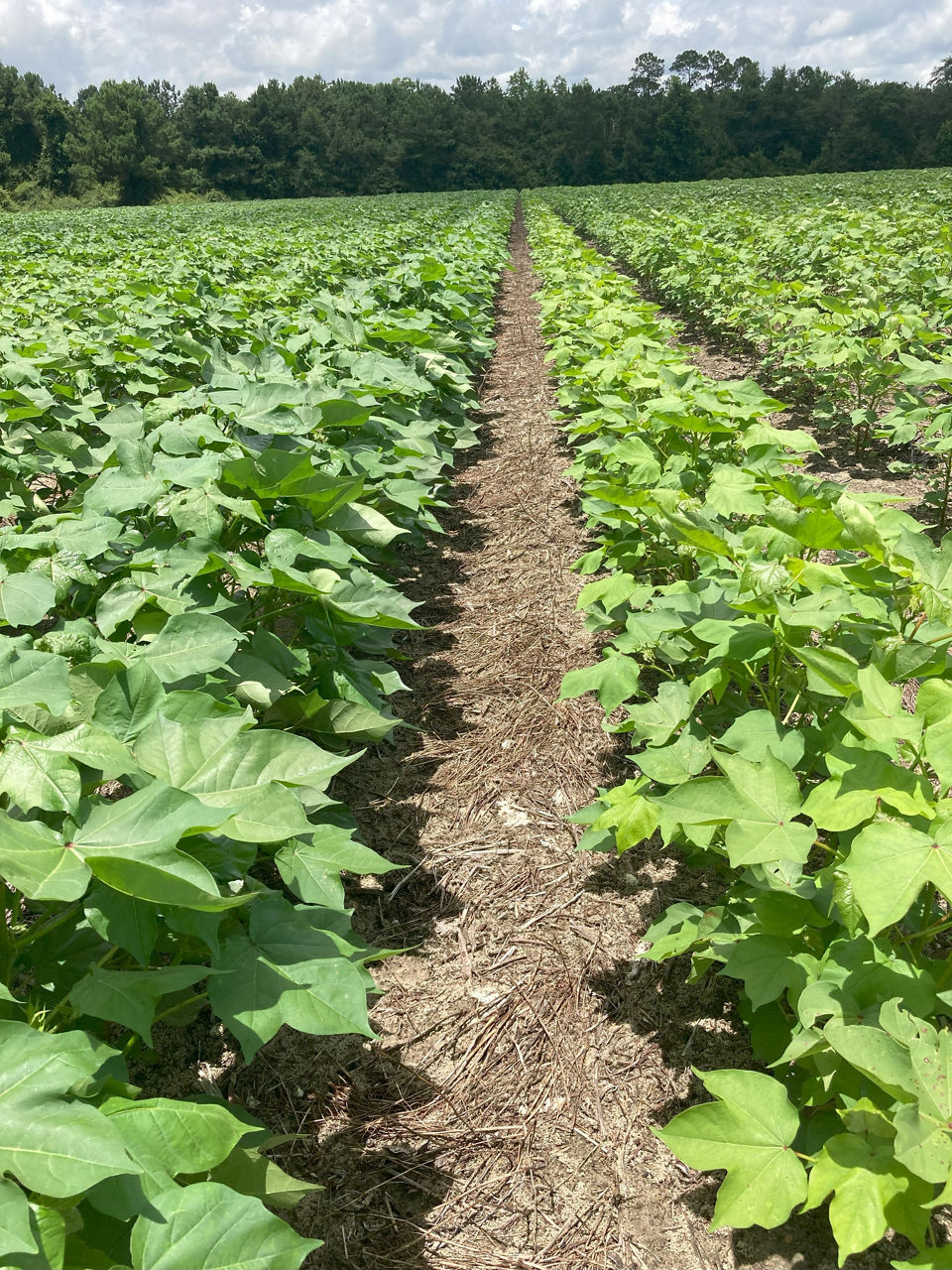
Nutrient Deficiencies
Nitrogen (N). Cotton has a high nitrogen demand, with the largest portion of N being used during reproductive growth. As the plant requires more energy to develop fruiting structures, nutrients mobile within the plant can move from older leaves to square and boll production. Nitrogen deficiency occurs first on older leaves, which turn yellowish in color, progress to shades of red, and finally become necrotic as the tissue dies. Plants may be stunted, have smaller leaves, fewer fruiting nodes, and poor fruit retention which can result in reduced yields and fiber quality. It is recommended to wait to make any soil-applied replacement N applications to a field until the second or third week of bloom. Foliar applications can be made after this point if plants are deficient.2
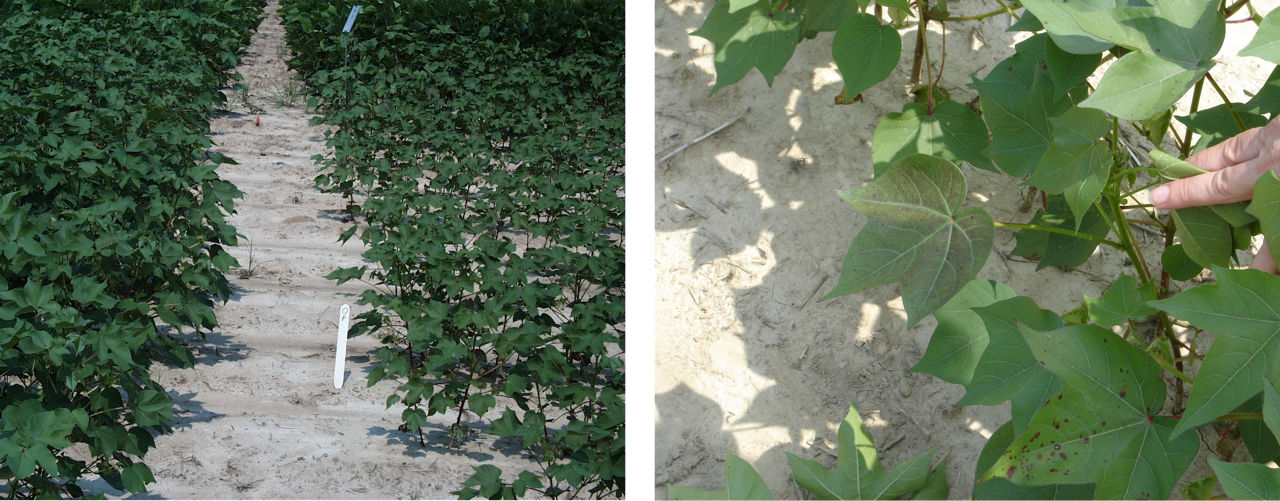
Phosphorus (P). Phosphorus is vital for early root development, earlier boll development and maturity, and for maximizing yield potential.1 Many cotton-growing areas have adequate P levels, so if a deficiency is present, it is typically connected to a low soil pH.2 Plants deficient in P can be stunted with limited root growth, weak stems, and reduced secondary branching, which can limit yield potential. Symptoms appear first in older leaves as dark green to reddish purple coloring. Deficiency can delay maturity, allowing for potential insect infestation. Phosphorus deficiency can also reduce staple quality and yield potential.

Potassium (K). Potassium is critical during early boll set, with 70% of the total uptake occurring at first bloom.3 Potassium helps improve fiber length and maturity, reduces early leaf drop, and contributes to maintaining yield potential.1 Deficiency can occur in fields with adequate K if soils are dry.2 Young plants that are deficient in K may be stunted. Leaves develop interveinal chlorosis that begins at the leaf tip and margins and moves upward, advancing into crinkled, brittle leaves with cupped lobes that eventually become necrotic. Symptoms prior to bloom appear on older leaves first, while late-season symptoms appear on young leaves. Plants can shed leaves early, cutout prematurely, have poor lint quality, and have lower yield potential.4 Deficiency is also associated with increased incidence of Alternaria, Cercospora, and Stemphylium leaf spots.5
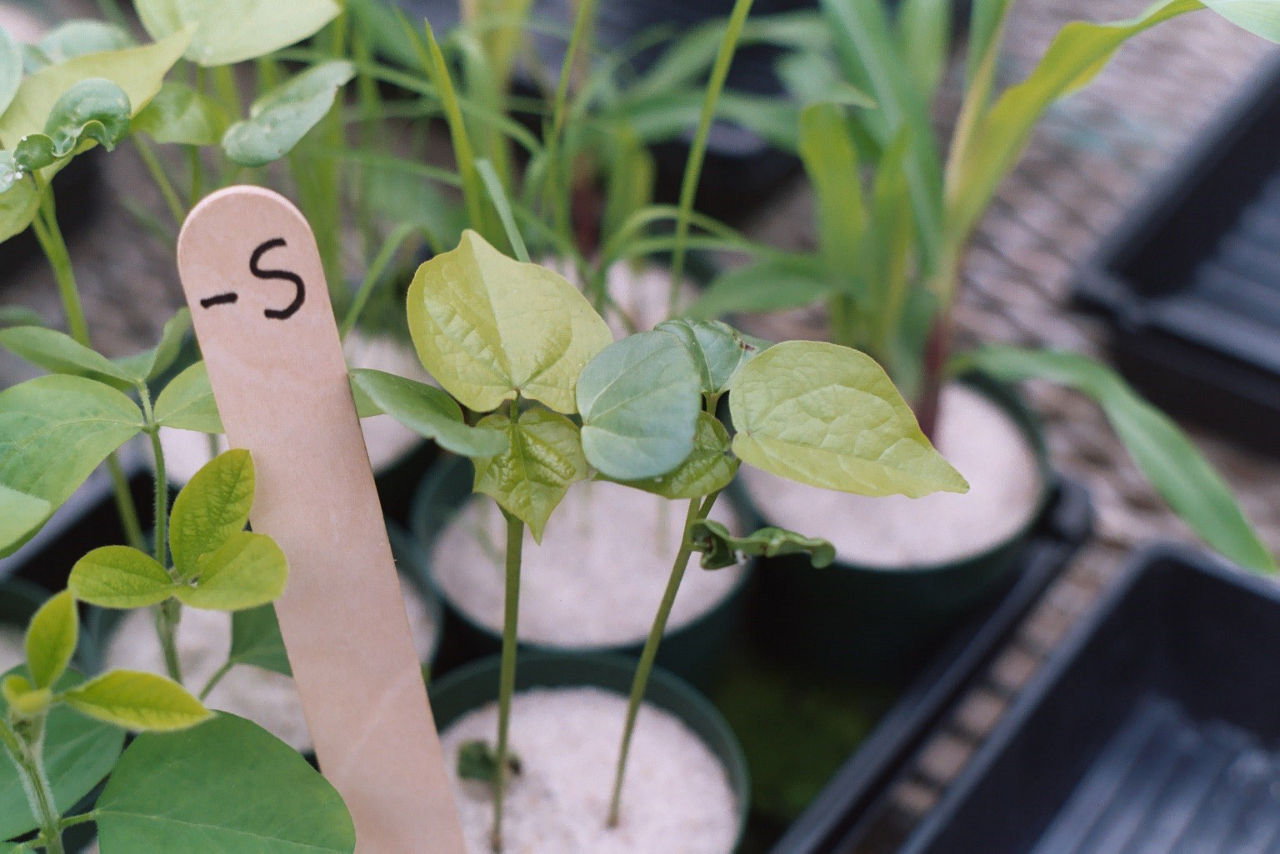
Sulfur (S). A portion of the S requirement for cotton production is derived from crop residue, organic matter, and rain.2 Soils that are coarse textured, low in organic matter, and have good drainage may be more prone to S deficiency. Symptoms of sulfur deficiency appear similar to nitrogen deficiency (yellowish-green leaves), but the age of affected leaves can help determine the culprit. Nitrogen deficiency symptoms appear first on older leaves whereas sulfur deficiency symptoms occur first on younger leaves. Sulfur deficiency is more common in sandy soils and waterlogged soils, though symptoms relieve after waterlogging is resolved.6
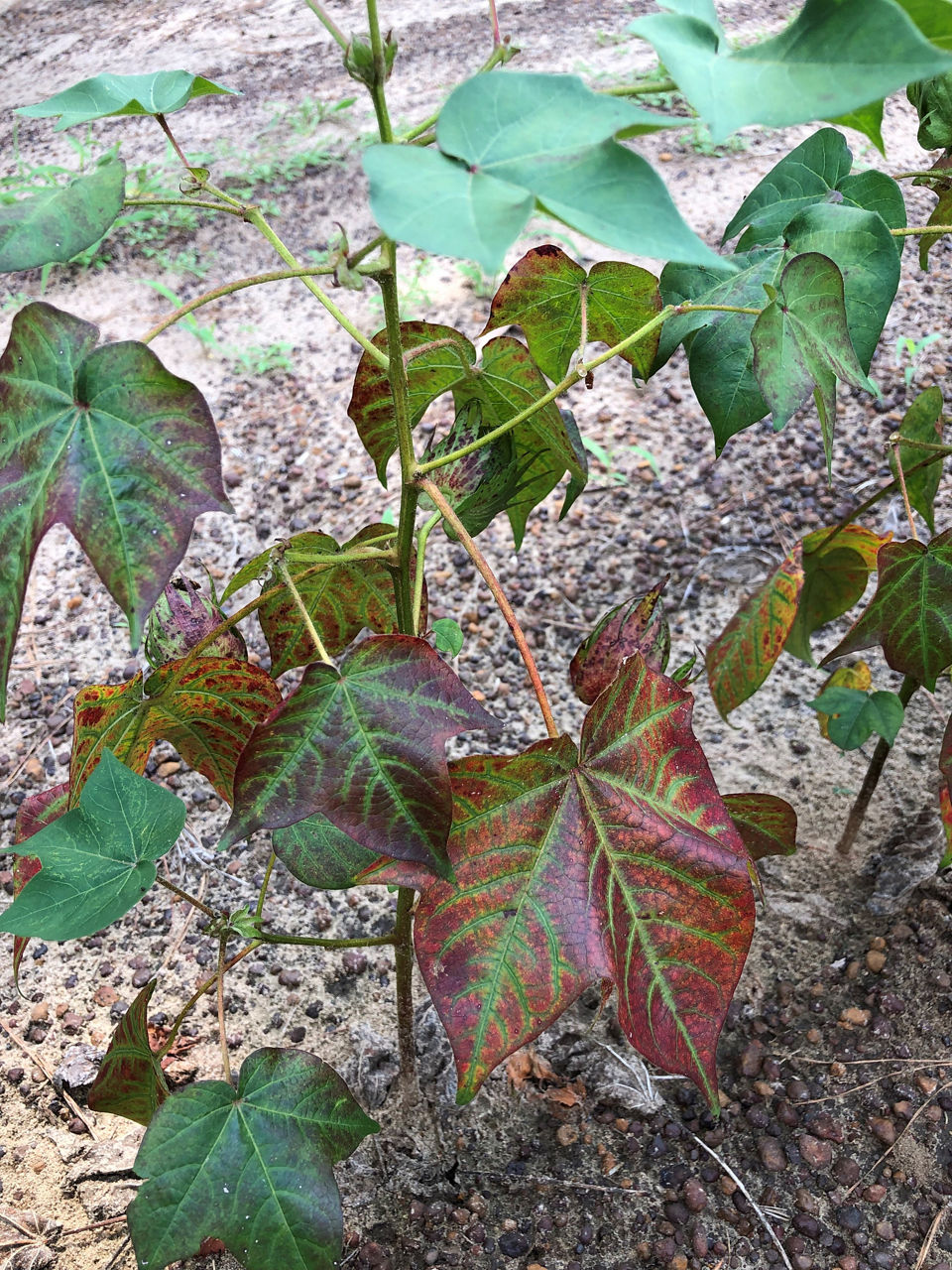
Magnesium (Mg). Magnesium is critical for photosynthesis, growth, nutrient utilization, and fiber quality.1 Magnesium availability can be limited due to soil acidity. Symptoms of Mg deficiency appear first in older leaves. On Mg deficient plants, leaves will be reddish-purple with veins that remain green (Figure 5). Leaves may also droop. Magnesium deficiency can be common in areas of the South.
Calcium (Ca). Calcium helps strengthen cell walls and is important for root and shoot growth.1
Cotton has a high Ca requirement but is not a common deficiency in the Cotton Belt with appropriate pH management. Calcium deficiency may be observed in sandy soils under drought conditions. Young plants may be stunted with limited shoot development. Leaves may have chlorotic spots or curled leaf margins and tissue death may occur. Growing points on roots and shoots may be dark or terminated.
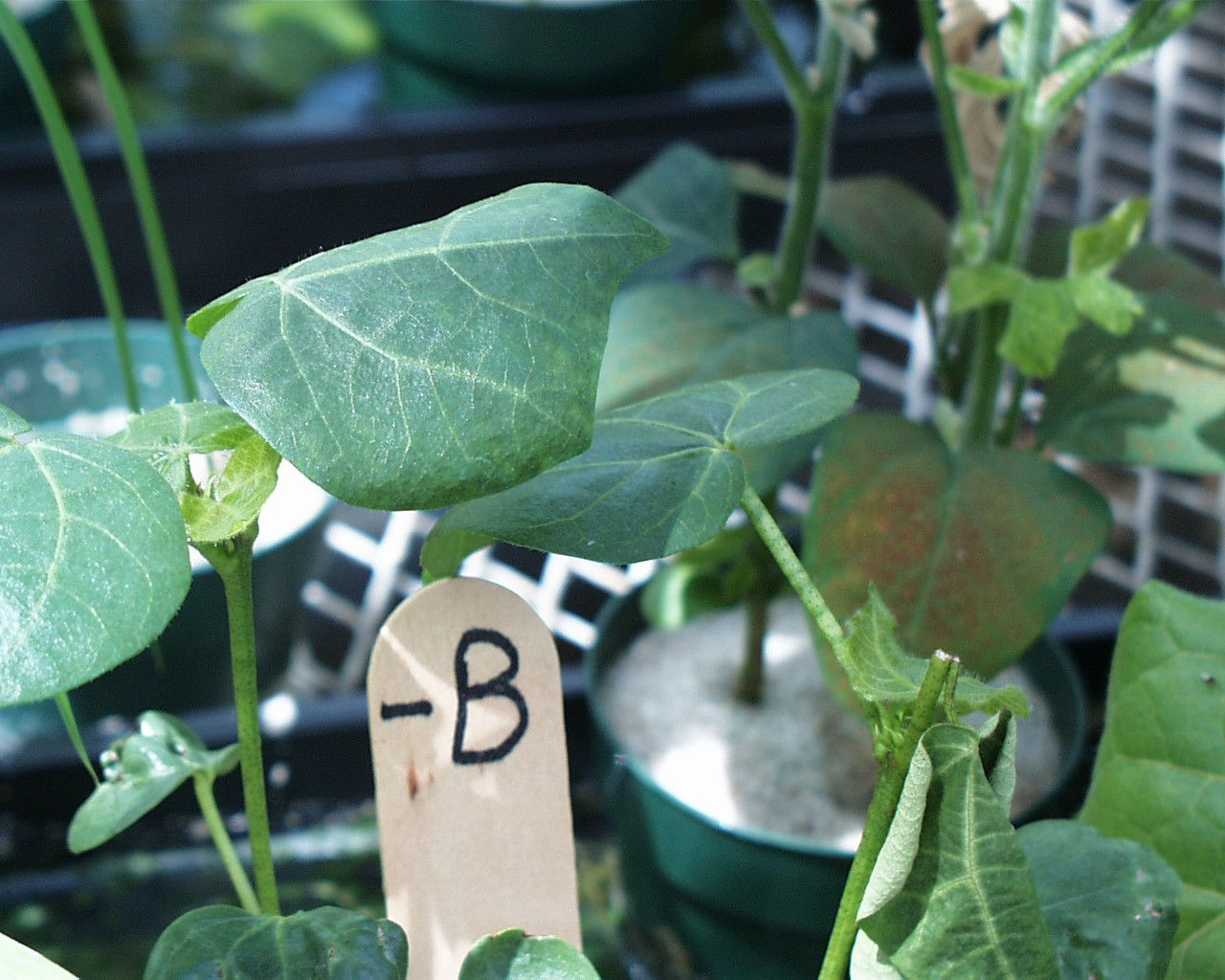
Boron (B). Boron is the most common micronutrient deficiency in cotton fields. Boron is required throughout the season, and especially during flowering and boll production. Boron can be released as organic matter decomposes, and under dry conditions temporary B deficiency can occur due to limited decomposition and root growth. Boron also leaches quickly.2 Plants deficient in B can have malformed upper leaves, dark banding on leaf petioles, and aborted flowers and bolls. Symptoms appear first on older leaves.6

Zinc (Zn). Plants deficient in Zn may have leaves with a leathery appearance, which are turned upwards, light yellow in color, with green veins. Symptoms appear first in younger leaves.6,7
Manganese (Mn). Coastal plain soils may be more prone to Mn deficiency.2 Symptoms of Mn deficiency first appear on younger leaves and develop as leaf yellowing between veins.6
Determining a Deficiency in Season
Leaf and petiole sampling can be used during the season as a tool to help indicate adequate nutrition prior to bloom or during early bloom. Tissue samples later in the season are not as indicative. The most recently mature leaf should be sampled, which is typically four or five nodes below the terminal. The results will indicate the nutrient status of the plant two to three weeks earlier. Contact your local extension office for information on tissue sampling labs and how to sample.2
Sources
1 Ahmed, N., Ali, M.A., Danish, S., Chaudhry, U.K., Hussain, S., Hassan, W., Ahmad, F., and Ali, N. 2020. Role of macronutrients in cotton production. Cotton Production and Uses. https://doi.org/10.1007/978-981-15-1472-2_6.
2 Gatiboni, L. and Hardy, D.H. 2024. Fertilization. 2024 Cotton Information. North Carolina State University. https://content.ces.ncsu.edu/cotton-information/fertilization/.
3 How a cotton plant grows. Texas A&M AgriLife Research and Extension. https://sanangelo.tamu.edu/extension/agronomy/agronomy-publications/how-a-cotton-plant-grows/#:~:text=It%20also%20is%20important%20to,plant%20population%20and%20seedling%20health
4 Dodds, D. and Pieralisi, B.K. Potassium. Mississippi State University Extension. http://extension.msstate.edu/content/potassium
5 Harris, G. 2023. Potassium fertilizer management in cotton. University of Georgia. https://doi.org/10.1094/GROW-COT-01-23-383
6 2013. Nutrient deficiencies in cotton. International Plant Nutrition Institute. http://www.ipni.net/article/IPNI-3327
7 The University of Tennessee. Nutrient deficiency symptoms for corn, cotton, and soybean. Nutrient Deficiency. https://utcrops.com/soil/soil-fertility/nutrient-deficiency/.
1413_336012